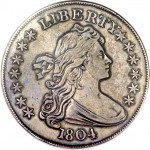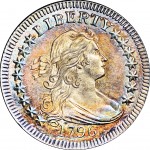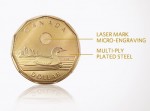Weekly World Numismatic News for December 6, 2020
For this week’s update, here are some news shorts:
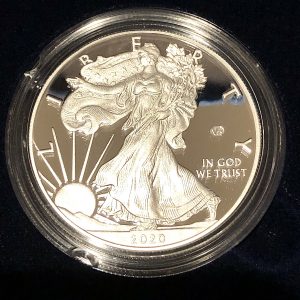 The White House announced that the president signed H.R. 4104, the Negro Leagues Baseball Centennial Commemorative Coin Act. The law creates a commemorative coin program in 2022 that includes a gold $5, silver dollar, and half-dollar coins in honor of the centennial of the Negro Leagues. Treasury will pay the surcharges to the Negro Leagues Baseball Museum.
The White House announced that the president signed H.R. 4104, the Negro Leagues Baseball Centennial Commemorative Coin Act. The law creates a commemorative coin program in 2022 that includes a gold $5, silver dollar, and half-dollar coins in honor of the centennial of the Negro Leagues. Treasury will pay the surcharges to the Negro Leagues Baseball Museum.
More stories keep appearing that say the current coin shortage is leading us toward a cashless society. All of the articles are the same. They claim that without circulating coins, more people “may” be relying on electronic payments. At the same time, they note that the U.S. Mint has increased production and the Federal Reserve reports that market indicators suggest that for non-online purchases, the public is spending cash at a higher rate than using credit cards.
I noticed a pattern when reviewing my notes. The latest article and many others with these conflicts were published by NPR or an NPR affiliate radio station. It seems as if NPR has an agenda.
The Royal Mint has released another 50 pence circulating commemorative coin for Christmas and is as popular as their previous issues. While U.S. collectors complain about new programs, the Brits embrace the new collectibles. The 50p coins have become so popular that it is becoming challenging to find 50p coins in circulation.
Finally, my End of World War II 75th Anniversary American Silver Eagle Proof Coin arrived this last week. Although the privy mark is not that exciting, they should have made the privy mark bigger. It’s still an American Silver Eagle. I love large silver coins!
And now the news…
 → Read more at greekcitytimes.com
→ Read more at greekcitytimes.com
 → Read more at wbur.org
→ Read more at wbur.org
 → Read more at southwalesargus.co.uk
→ Read more at southwalesargus.co.uk
2014
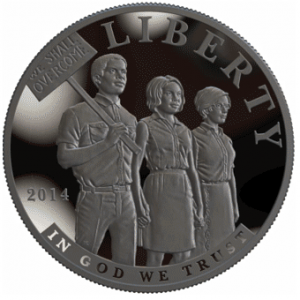
2014 Civil Rights Act of 1964 Silver Dollar obverse

2014 Civil Rights Act of 1964 Silver Dollar reverse
Counting Down the Top 10: #1 No trouble with the curve
For the first time ever, the U.S. Mint will be producing a coin that is not flat. The curved coin is of the 2014 National Baseball Hall of Fame Commemorative Coin.
The National Baseball Hall of Fame Commemorative Coin Act (Public Law 112-152 [PDF]) celebrates the 75th Anniversary of the National Baseball Hall of Fame in Cooperstown, New York. The three-coin commemorative program consisting of a $5 gold coin (50,000 maximum mintage), $1 silver coin (400,000 maximum), and a clad half-dollar (750,000 maximum) struck as uncirculated coins or as proofs.
The bill required an open competition for a common obverse design “emblematic of the game of baseball.” During the government shutdown this past October, the U.S. Mint posted the announcement on their website that the winning design was submitted by Cassie McFarland of San Luis Obispo, California.
McFarland told reporters that she stumbled upon the competition while researching coins for another art project. McFarland found the U.S. Mint’s call for design two days before the deadline and submitted a drawing. Her drawing was based on an old baseball glove belonging to a relative.

Cassie McFarland
U.S. Mint Sculptor-Engraver Don Everhart will do the engraving of McFarland’s winning design. Everhart created the reverse design.
Surcharges will be $35 per gold coin, $10 per silver coin, and $5 for the clad half-dollar to be paid to the National Baseball Hall of Fame for their continuing operations. If all the coins sell out, the Hall of Fame will receive $9.5 million for ongoing operations.
Given that the selection of Coin of the Year tends to favor gimmicks (to explained in a future post), it would not be surprising that this coin wins COTY when it is considered at the end of 2015.
In the mean time, it will be interesting to see this coin in hand as this is the #1 numismatic-related story as selected by the board of the Coin Collectors Blog!
Adding to the Top 10: #2 More Auction Records
 As a follow-up to #2 Records have been broken in the Coin Collectors Blog Top 10 countdown, the Professional Numismatists Guild published a “State of the Industry” report that included the list of 12 U.S. coins that sold for over $1 million. One was a private sale while the others were sold at auction.
As a follow-up to #2 Records have been broken in the Coin Collectors Blog Top 10 countdown, the Professional Numismatists Guild published a “State of the Industry” report that included the list of 12 U.S. coins that sold for over $1 million. One was a private sale while the others were sold at auction.
The eleven most valuable U.S. coins purchased by winning bidders at auctions in 2013 were as follows:
- 1794 Flowing Hair silver dollar, $10,016,875 (Stack’s Bowers Galleries)
- 1804 Type I silver dollar, $3,877,500 (Heritage Auctions)
- 1913 Liberty Head nickel, $3,172,500 (Heritage Auctions)
- 1880 Coiled Hair gold $4 denomination Stella, $2,574,000 (Bonhams)
- 1796 silver quarter-dollar, $1,527,500 (Heritage Auctions)
- 1792 silver half disme (early spelling of dime) $1,410,000 (Heritage Auctions)
- 1796 silver dollar, $1,175,000 (Heritage Auctions)
- 1783 Nova Constellatio Quint Type II, $1,175,000 (Heritage Auctions)
- 1852 Augustus Humbert $10 gold coin, $1,057,500 (Heritage Auctions)
- 1792 half disme, $1,145,625 (Stack’s Bowers Galleries)
- 1879 Coiled Hair gold $4 Stella, $1,041,300 (Bonhams)
The 12th U.S. rare coin that sold for more than a $1 million in 2013 was an 1894 San Francisco Mint dime that sold for over $2 million in a private sale conducted by David Lawrence Rare Coins.
A PNG survey of auction houses showed that they sold a total of $392.8 million in U.S. rare coins in public auctions in 2013. Based on the PNG survey, the sales scoreboard is as follows:
- Heritage Auctions, $236.5 million
- Spectrum Group International (Stack’s Bowers Galleries and Teletrade), $105 million
- Goldberg Coins & Collectibles, $21.1 million
- Bonhams, $13.5 million
- Legend-Morphy Rare Coins, $7.2 million
- David Lawrence Rare Coins, $5.5 million
- Scotsman, $2.8 million
- Krueger & Krueger, $1.2 million
All prices include the buyer’s premium, if any.
This survey did not include paper money or world coins. It would be interesting to see the impact of the currency and world coin market alongside the U.S. coin market.
Counting Down the Top 10: #2 Records have been broken
This past year saw the high-end market get even higher with the auction of significant rarities bringing in significant prices.
The year started Stack’s Bowers January 2013 New York Americana Sale where a rare, only known die variety 1794 Flowing Hair Silver Dollar graded SP66 by Professional Coin Grading Service sold for $10,016,875. The record price for a single coin was paid by Legend Numismatics of Lincroft, N.J.Legend Numismatics’ Laura Sperber took control of the bidding when she invigorated bidding that stalled at $5.5 million when she bit $8,525,000. She called it “shock and awe.” Sperber said that she knew that a $10 million coin would create a huge buzz for the industry and went on to predict that a coin would sell for $25 million before the end of the decade.

1913 Walton Specimen Liberty Head Nickel sold for $3,172,500 on April 25, 2013 to Jeff Garrett of Lexington, Kentucky and Larry Lee of Panama City, Florida.
At the 2003 World’s Fair of Money in Baltimore, a conclave of experts examined the coins for hours, debated, and determined that the coin was real. One of those involved in the marathon meeting was Jeff Garrett, the current Vice President of the American Numismatic Association.
Nearly ten years later, the coin was auctioned for the first time. Graded PR63 by PCGS, the coin sold for $3,172,500 to Jeff Garrett and his business partner Larry Lee.
B. Max Mehl wrote in the Dunham Collection catalog of 1941, “In all of numismatics of the entire world, there is not today and there never has been a single coin which was and is the subject of so much romance, interest, comment, and upon which so much has been written and so much talked about and discussed as the United States silver dollar of 1804.”Maybe the discovery of the 1933 Double Eagle coins may have the 1804 dollar beat, but only one version of that coin is legal to own. There are 15 known coins dated 1804 even though they were struck later. In 1834, eight dollar coins were struck with the 1804 date to include in a special set created as a gift for the King of Siam. The set was presented to the King by President Andrew Jackson during trade missions to the Middle East and Asia.
It is known as “The King of Coins.”
The coin is designated as The Mickley-Hawn-Queller Class I Original 1804 Dollar, graded PR62 by PCGS, sold for $3,877,500 to an anonymous bidder.
While the records for coins listed above were for dollars, the year saw a record price placed for a quarter dollar. Sold as part of the Eric P. Newman Collection, the 1796 B-2 Quarter Dollar, once owned by “Col.” E.H.R. Green and purchased by Newman in 1931 for $100, the coin sold for $1,527,500. Graded MS67+* by Numismatic Guarantee Corporation is the finest known 1796 quarter.In case you were curious, according to the Bureau of Labor Statistics Inflation Calculator, $100 in 1931 has the same buying power at $1,533.35 today. Conversely, the $1.5 million sale price is equivalent to $99,618.57 in 1931.
The coin was sold as part of the November 13, 2013 “16 Selections from the Eric P. Newman Collection Part II Signature Auction” held in New York. Proceeds from the sale goes to support the Eric P. Newman Numismatic Education Society.
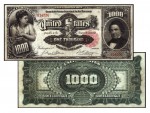
1891 Marcy $1,000 silver certificate (PMG VF25) sells for $2,600,000 by Stacks-Bowers in a private sale.
The note was graded VF25 by Paper Money Guaranty.
The note was sold as part of a collection of more than 85 large-size Silver Certificates that are the finest ever put together. Five notes were sold as part of this transaction. The other 80 went for sale at the 2013 World’s Fair of Money.
Can you imagine what would happen if the Langboard Hoard of 1933 Double Eagles ever make it to the auction block?
- 1794 Flowing Hair Dollar and 1891 $1000 Silver Certificate images courtesy of Stack’s Bowers Galleries
- 1913 Walton Liberty Head Nickel, 1804 Dollar, and 1796 Quarter dollar images courtesy of Heritage Auctions
Counting Down the Top 10: #3 Fighting Counterfeits
Counterfeiting coins and currency has been a problem for both the government and the numismatic industry. Government has shown it will go to extensive lengths in order to change the $100 note in order to stop currency counterfeiting. In fact, currency has had a long history of trying to fight currency counterfeiting.
For collectors of United States coins, there is a problems with the counterfeiting of classic coins primarily from China. In China, it is legal to reproduce obsolete
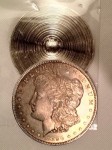
An example of a Morgan Dollar cut in half to match a date with a mintmark to have the coin appear something it is not. Coin was in a counterfeit PCGS slab and caught by one of their graders.
Those who create counterfeit coins are not making “tributes,” as has been the stance of the Chinese government. They are reproducing rarities and trying to pass them as real coins. In some cases, these counterfeiters are even trying reproduce the third-party grading service slabs in order to get them past scrutiny.
In the United States, Industry Council for Tangible Assets and the Gold & Silver Political Action Committee has been working to have congress update the Hobby Protection Act (15 U.S.C §§ 2101-2106) to provide for more protection to the buyer. Aside from strengthening the requirement to have copies appropriately marked and marketed, it allows for duped buyers and the government to take action against the resellers. Currently, the Hobby Protection Act only allows for action against the manufacturers and not anyone else in the supply chain. By opening the supply chain to prosecution it is hoped that it will choke off the supply.
This past August, the House of Representatives passed the Collectible Coin Protection Act on a unanimous voice vote.
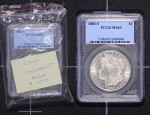
PCGS representatives showed Congressmen counterfeit U.S. coins in counterfeit PCGS holders during their recent meetings in Washington, DC. (Photo courtesy of PCGS.)
Collectible coins are not the only problem. Great Britain has been having problems since the issue of new £1 coins entering circulation starting in 2010. Even though arrests have been made, there remains an undetermined amount of counterfeit coins in circulation.
Last summer, counterfeiters were arrested in Greece and Turkey for producing fake 2 Euro coins. These counterfeits look very similar to the standard 2 Euro coin with the standard Greece reverse. A real 2 Euro coin is a bi-metalic coin that does not separate. The counterfeits will separate and are lighter than the real version.
In Canada, the Royal Canadian Mint has changed the Loonie and Toonie to include micro engraving to thwart counterfeiters. The RCM has also changed the composition of the coins which will help them last longer.
Counterfeit coins and currency will continue to be a problem. Every change, no matter how small, is not only good for the economy, it is good for the hobby.
- The new technology used by the Royal Canadian Mint to protect the Loonie ($)
- The new technology used by the Royal Canadian Mint to protect the Toonie (C$2)


